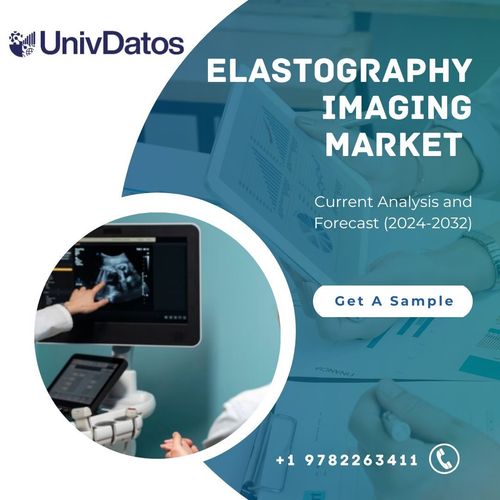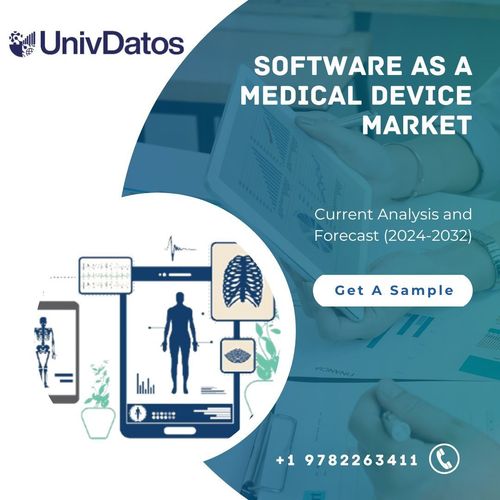Spatial Genomics & Transcriptomics Market: Current Analysis and Forecast (2024-2032)
Emphasis on By Technology Type (Spatial Genomics, Spatial Transcriptomics); By Product Type (Instruments, Consumables, and Others); End-users (Biopharmaceutical and Biotechnology Companies, Academic and Research institutes, Contract Research Organization, and Others); and Region/Country
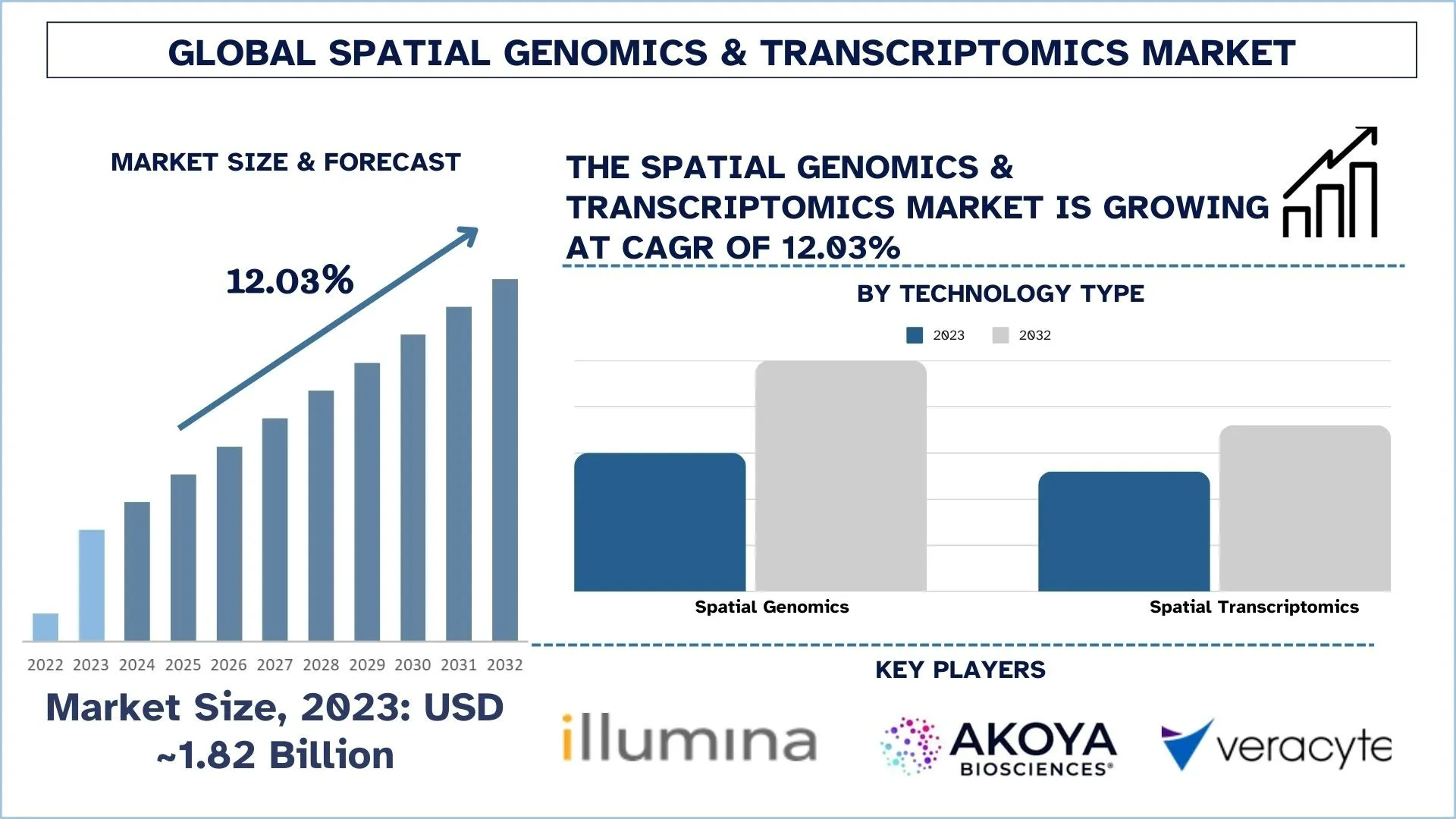
Spatial Genomics & Transcriptomics Market Size & Forecast
The Spatial Genomics & Transcriptomics market was valued at approximately USD 1.82 billion in 2023 and is expected to grow at a substantial CAGR of around 12.03% during the forecast period (2024-2032) owing to the rapid increase in the pervasiveness of chronic diseases.
Spatial Genomics & Transcriptomics Market Analysis
Spatial genomics deciphers the genomic information of individual cells within their native environment. It helps to assess the linkages between the cells and their exact locations within the tissues for understanding the normal development and the disease pathology. Similarly, spatial transcriptomics is a molecular profiling method that quantifies gene activity across tissue samples. It aims to count the number of transcripts of a gene at a particular location in a cell. It encompasses a variety of methods to quantify the expression of RNA directly from intact tissues such as in-situ hybridization (ISH), in-situ sequencing (ISS), and in-situ capturing (ISC). This sector has constant innovations in technology through enhancements of new features like AI and machine learning in managing health solutions and making better drug discoveries. For instance, on February 1, 2024, NanoString Technologies, announced the commercial availability of the CosMx™ Human 6K Discovery Panel, the industry’s first single-cell spatial panel enabling research scientists to measure over 6,000 RNA targets, representing nearly every human biological pathway. Building on this breakthrough product developed for the CosMx Spatial Molecular Imager (SMI), NanoString and independent researchers also highlighted the recently achieved whole transcriptome imaging capability, i.e. the pinnacle of spatial biology at the Advances in Genome Biology and Technology (AGBT).
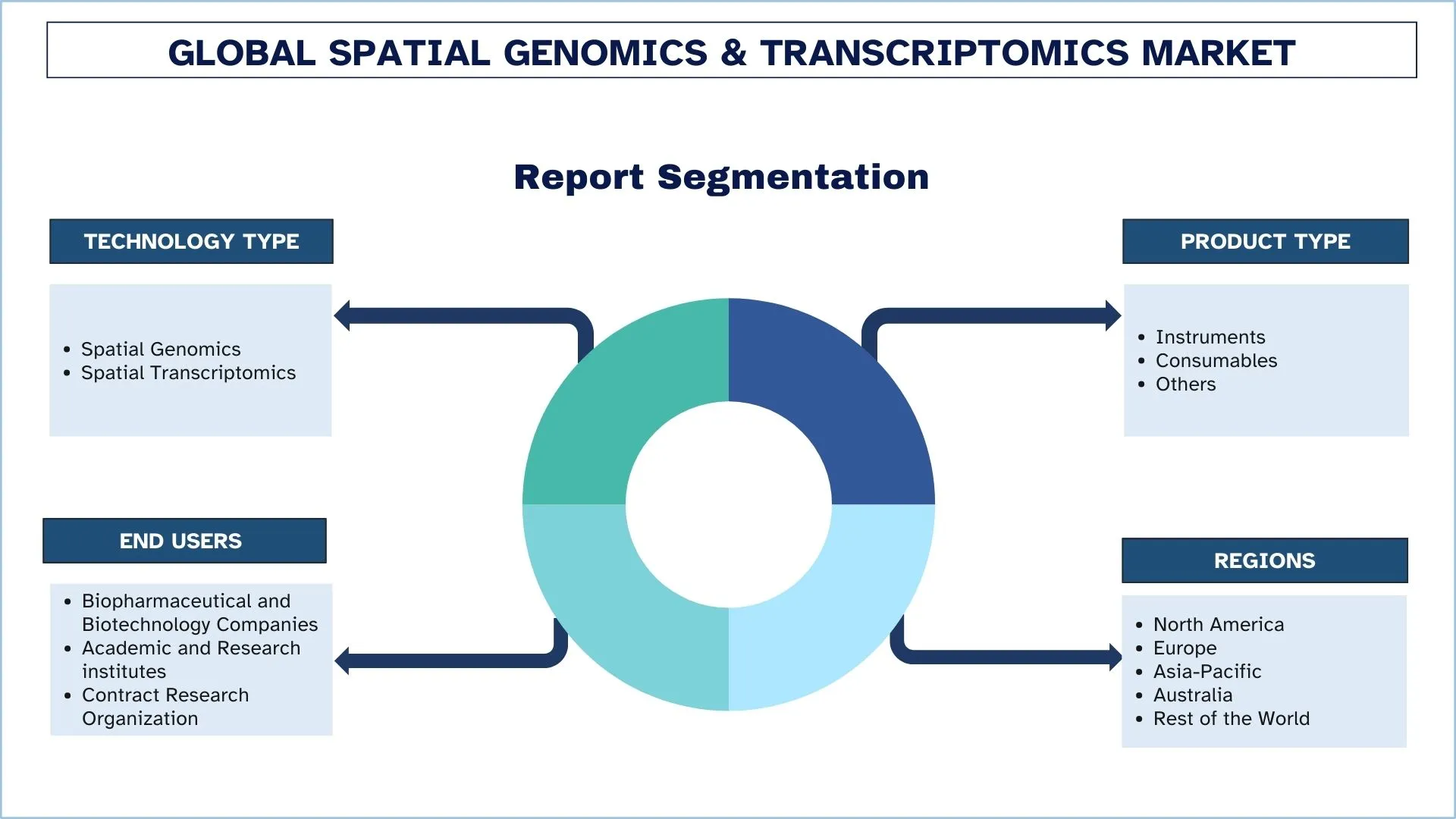
Spatial Genomics & Transcriptomics Market Trends
This section discusses the key market trends influencing the various segments of the Spatial Genomics & Transcriptomics market as identified by our research experts.
Increasing use of spatial omics for biomarker identification is driving the Spatial Genomics & Transcriptomics Industry.
Spatial omics is catalyzing the growth of the spatial genomics & transcriptomics market by offering a vivid spatial context to gene and protein expression within tissues. It allows the researchers to map the distribution of biomarkers within the tissues, identifying their exact locations. For instance, on Feb 19, 2025, Illumina, Inc. unveiled first-of-its-kind spatial transcriptomics technology that will empower researchers to map complex tissues and understand cellular behavior at an unprecedented scale. Enabled on Illumina sequencers and a new multimodal analysis platform, Illumina's spatial technology delivers unbiased whole-transcriptome profiling with cellular resolution and high sensitivity. These capabilities are expected to drive the expansion of spatial research and unlock applications and experiments that were previously not possible. Moreover, it helps in tumor microenvironment analysis aiding in the development of targeted therapies. It also offers cell-to-cell interaction studies, which is vital in getting to know about the disease mechanisms. It further provides high-resolution insights into tissue architecture, enabling the identification of biomarkers that are specific to certain cell types and regions.
Spatial Genomics & Transcriptomics Industry Segmentation
This section provides an analysis of the key trends in each segment of the global Spatial Genomics & Transcriptomics market report, along with forecasts at the global, regional, and country levels for 2024-2032.
The spatial genomics market dominates the Spatial Genomics & Transcriptomics market
Based on the technology type, the market is segmented into spatial genomics and spatial transcriptomics. The spatial genomics market dominated the spatial genomics & transcriptomics market in 2023. This is mainly due to the increased demand for precision medicine and advancements in cancer research. The tailored treatments provide explicit acumen into tissue organization, cell interactions, and gene expressions. Spatial genomics helps to decipher the complexities of cancer at the cellular level. Further, the integration assists organizations in dealing with the increasing complexities in cancer diagnosis and treatment, which is enabled by spatial genomics, as it allows researchers to study genes in their native spatial context. For instance, on Sept. 19, 2023, Akoya Biosciences, Inc. highlighted the industry-leading scale and speed in whole-slide, spatial biology workflows enabled by the recently launched PhenoCycler Fusion 2.0 and PhenoImager HT 2.0 platform upgrades. Enhancements to the PhenoCycler-Fusion 2.0 System allow customers to process twice as many samples per week, making it the highest throughput spatial discovery platform on the market. The PhenoImager 2.0 platform delivers a 5x workflow improvement by enabling rapid real-time image analysis directly on the HT instrument. With an unprecedented ability to perform whole-slide spatial biology at scale, Akoya’s customers can accelerate progress towards discoveries, identification of clinically relevant biomarkers, and development of novel spatial signatures.
The instruments segment dominates the Spatial Genomics & Transcriptomics market
Based on the product type, the market is segmented into instruments, consumables, and others. The instruments segment held a significant market share in 2023. The market for instruments is led by large corporations that incorporate Spatial Genomics & Transcriptomics solutions to improve drug discoveries through rapid advancements in technological innovations. Further, the use of artificial intelligence for analyzing spatial data has enhanced the utility and appeal of these instruments. Moreover, these instruments are essential for comprehending the intricate biological systems peculiarly in areas such as cancer, neuroscience, and developmental biology. Accordingly, Spatial Genomics & Transcriptomics have gained adoption among large enterprises due to integration with AI, and it opened new markets for pharmaceutical companies breaking the dependence on traditional technologies.
North America leads the market in 2023.
North America held a dominant share of the market in 2023 owing to the strong biotechnology ecosystem and higher research and development investments. Major companies and organizations in North America are now using spatial genomics & transcriptomics to improve healthcare solutions management and better drug discoveries. Further, the growing reliance on personalized medicine and targeted therapies has bolstered the demand for these technologies in drug discovery and development. North America has developed a healthcare system equipped with cutting-edge technologies such as spatial genomics and transcriptomics. Further, this region has the best academic universities and research centers that are actively involved in advancing spatial technology applications. Moreover, a strong focus on funding by the government and institutions in this region shall also provide a strong boost to the spatial genomics & transcriptomics market’s growth. Furthermore, the compliance standards of North America such as the Health Insurance Portability and Accountability Act (HIPAA), and the Affordable Care Act (ACA) influence the growth of the spatial genomics & transcriptomics market. According to the National Cancer Institute of the United States, an estimated 2,001,140 new cases of cancer were diagnosed in the United States and 611,720 people died from the disease in 2024.
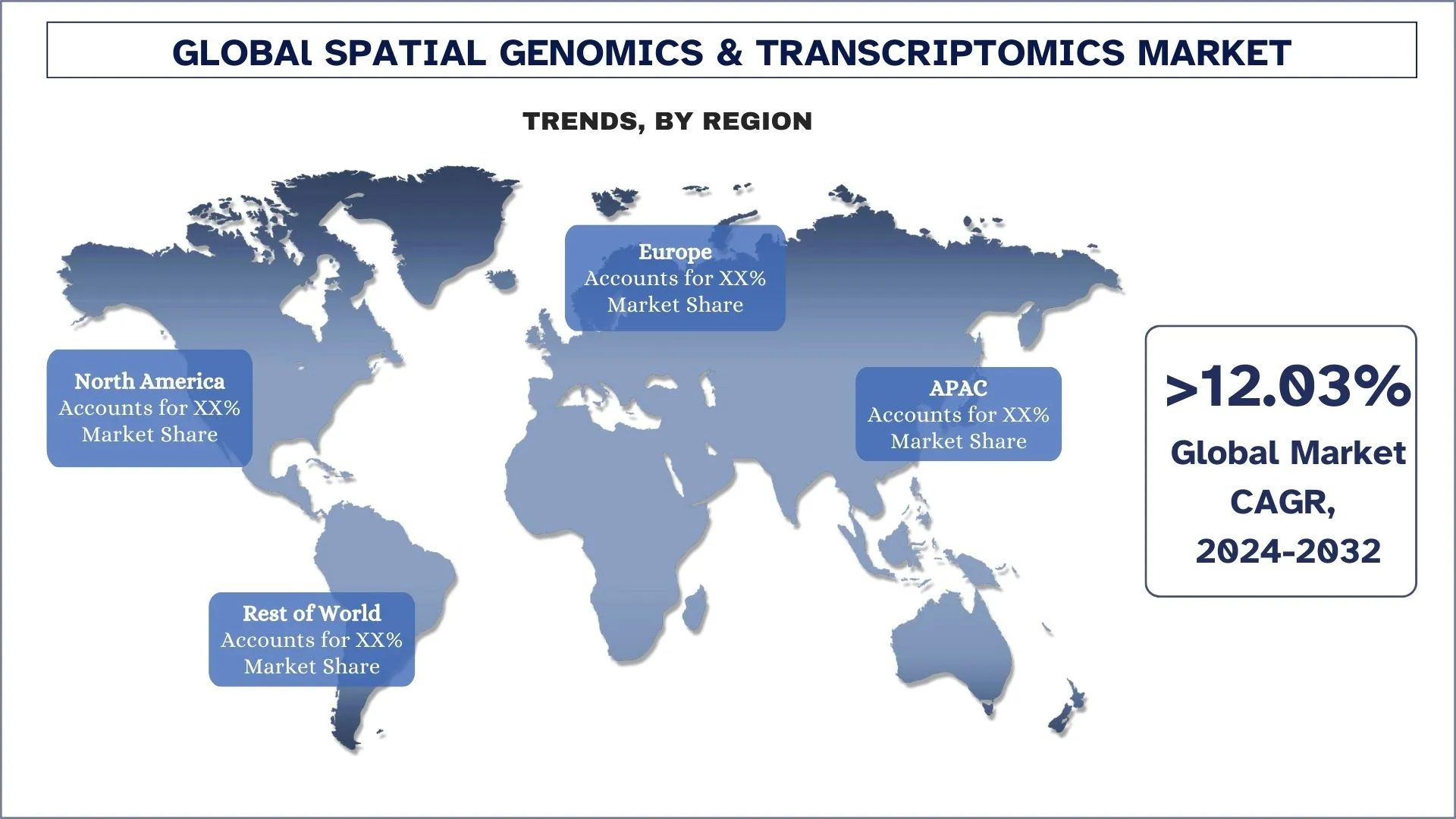
Spatial Genomics & Transcriptomics Industry Competitive Landscape
The Spatial Genomics & Transcriptomics market is competitive, with several global and international players. The key players are adopting different growth strategies to enhance their market presence, such as partnerships, agreements, collaborations, new product launches, geographical expansions, and mergers and acquisitions.
Top Spatial Genomics & Transcriptomics Companies
Some of the major players operating in the market are Akoya Biosciences, Bruker Spatial Biology, Illumina, Inc., Veracyte, Inc., Macrogen, Inc., Miltenyi Biotec, Standard Biotools, Lunaphore Technologies S.A., 10x Genomics, Vizgen Inc.
Recent Developments in the Spatial Genomics & Transcriptomics Market
On April 08, 2024 – Vizgen Expanded Single-Cell Spatial Transcriptomics Offering with Introduction of MERSCOPE® Ultra Platform and MERFISH 2.0 Chemistry at. With 3x increased imaging area and 2x speed, coupled with enhanced MERFISH sensitivity, MERSCOPE Ultra would offer greater sample flexibility and throughput, accelerating both human and translational research.
On March 26, 2024 - 10x Genomics, Inc. announced the commercial availability of its Visium HD Spatial Gene Expression product. This assay enabled researchers to measure the whole transcriptome from FFPE tissue sections at single cell-scale resolution.
On January 25, 2024– Bio-Techne Corporation with its spatial biology brands, Lunaphore and Advanced Cell Diagnostics (ACD), announced the launch of the first fully automated spatial multiomics workflow with same-section hyperplex detection of RNA and protein biomarkers. This state-of-the-art solution revolutionized the field of predictive biomarker research and drug development. The best-in-class multiomics solution leveraged ACD’s RNAscope™ HiPlex RNA detection and Lunaphore’s universal multiplex sequential immunofluorescence (seqIF™) technology on the COMET™ platform, which performed protein detection with standard, non-conjugated antibodies.
On October 9, 2024– The two largest private companies in the growing spatial biology segment, Vizgen, and Ultivue, said they have merged into a single entity that will offer both single-cell spatial genomics and multiplex proteomic profiling technologies to customers engaged in foundational and clinical research.
Spatial Genomics & Transcriptomics Market Report Coverage
Details | |
Base year | 2023 |
Forecast period | 2024-2032 |
Growth momentum | Accelerate at a CAGR of 12.03% |
Market size 2023 | USD 1.82 billion |
Regional analysis | North America, Europe, Asia-Pacific, Rest of the World |
Major contributing region | Asia-Pacific is expected to grow at the highest CAGR during the forecasted period. |
Key countries covered | U.S., Canada, Germany, France, UK, Spain, Italy, China, Japan, and India |
Akoya Biosciences, Bruker Spatial Biology, Illumina, Inc., Veracyte, Inc., Macrogen, Inc., Miltenyi Biotec, Standard Biotools, Lunaphore Technologies S.A., 10x Genomics, Vizgen Inc. | |
Report Scope | Market Trends, Drivers, and Restraints; Revenue Estimation and Forecast; Segmentation Analysis; Demand and Supply Side Analysis; Competitive Landscape; Company Profiling |
Segments Covered | By Technology Type, By Product Type, By End-Users, By Region/Country |
Reasons to buy Spatial Genomics & Transcriptomics market report:
The study includes market sizing and forecasting analysis validated by authenticated key industry experts.
The report presents a quick review of overall industry performance at one glance.
The report covers an in-depth analysis of prominent industry peers with a primary focus on key business financials, product portfolios, expansion strategies, and recent developments.
Detailed examination of drivers, restraints, key trends, and opportunities prevailing in the industry.
The study comprehensively covers the market across different segments.
Deep dive regional level analysis of the industry.
Customization Options:
The global Spatial Genomics & Transcriptomics market can be customized further as per the requirement or any other market segment. Besides this, UnivDatos understands that you may have your own business needs, hence feel free to connect with us to get a report that completely suits your requirements.
Table of Contents
Research Methodology for Spatial Genomics & Transcriptomics Market Analysis (2022-2032)
We analyzed the historical market, estimated the current market, and forecasted the future market of the global Spatial Genomics & Transcriptomics market to assess its application in major regions worldwide. We conducted exhaustive secondary research to gather historical market data and estimate the current market size. To validate these insights, we carefully reviewed numerous findings and assumptions. Additionally, we conducted in-depth primary interviews with industry experts across the Spatial Genomics & Transcriptomics value chain. After validating market figures through these interviews, we used both top-down and bottom-up approaches to forecast the overall market size. We then employed market breakdown and data triangulation methods to estimate and analyze the market size of industry segments and sub-segments.
Market Engineering
We employed the data triangulation technique to finalize the overall market estimation and derive precise statistical numbers for each segment and sub-segment of the global Spatial Genomics & Transcriptomics market. We split the data into several segments and sub-segments by analyzing various parameters and trends, including technology type, product type, end users, and regions within the global Spatial Genomics & Transcriptomics market.
The main objective of the Global Spatial Genomics & Transcriptomics Market Study
The study identifies current and future trends in the global Spatial Genomics & Transcriptomics market, providing strategic insights for investors. It highlights regional market attractiveness, enabling industry participants to tap into untapped markets and gain a first-mover advantage. Other quantitative goals of the studies include:
Market Size Analysis: Assess the current and forecast market size of the global Spatial Genomics & Transcriptomics market and its segments in terms of value (USD).
Spatial Genomics & Transcriptomics Market Segmentation: Segments in the study include areas of technology type, product type, end users, and regions.
Regulatory Framework & Value Chain Analysis: Examine the regulatory framework, value chain, customer behavior, and competitive landscape of the Spatial Genomics & Transcriptomics industry.
Regional Analysis: Conduct detailed regional analysis for key areas such as Asia Pacific, Europe, North America, and the Rest of the World.
Company Profiles & Growth Strategies: Company profiles of the Spatial Genomics & Transcriptomics market and the growth strategies adopted by the market players to sustain in the fast-growing market.
Frequently Asked Questions FAQs
Q1: What is the Spatial Genomics & Transcriptomics market's current size and growth potential?
The Spatial Genomics & Transcriptomics market was valued at USD 1.82 billion in 2023 and is expected to grow at a CAGR of 12.03% during the forecast period (2024-2032).
Q2: What are the driving factors for the growth of the Spatial Genomics & Transcriptomics market?
The rapid advancement in technology, along with the rising prevalence of chronic diseases drive the Spatial Genomics & Transcriptomics market.
Q3: In the Technology type category, which segment has the largest market share of the Spatial Genomics & Transcriptomics market?
The spatial genomics market has the largest market share of Spatial Genomics & Transcriptomics.
Q4: What are the major trends in the Spatial Genomics & Transcriptomics market?
The increasing use of spatial omics for biomarker identification is the major trend in the Spatial Genomics & Transcriptomics market.
Q5: Which region will dominate the Spatial Genomics & Transcriptomics market?
North America is expected to dominate the market in 2023.
Related Reports
Customers who bought this item also bought


